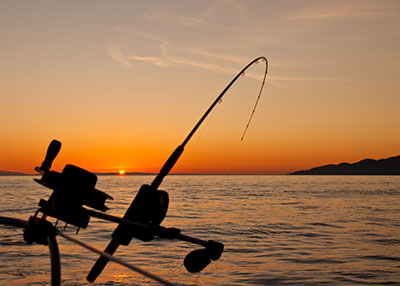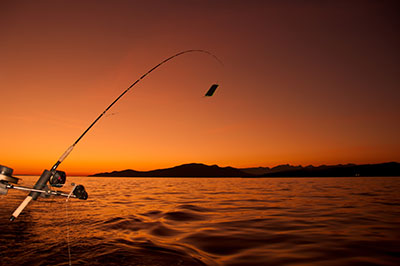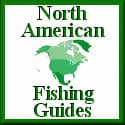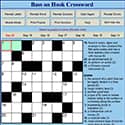Bass on Hook is Supported by our readers. As an Amazon Associate We earn commissions from qualifying purchases. For more informtion read our Amazon Affiliate Disclosure and Affiliate Disclosure Policies.
Using Downriggers to Find the Fish
By Paul Smith

As climate change grips the world those of us in Nootka Sound are finding it harder and harder to find the salmon.
The thermal clines in the water seem to be fluctuating with each temperature change.
So the salmon and baitfish move around to various depths trying to find a comfortable temperature in which to hold.
This makes it very difficult to place your gear at the right depths with the standard weights and lures.
Luckily with the invention of manual and electric downriggers, this is no longer an obstacle to overcome.
When trolling with downriggers, you can always control the depths at which you fish thereby increasing your chances at catching fish.
My Techniques For Using Downriggers To Find The Salmon
I like to start out with two rods per downrigger (4 total) when the fishing is slow and I'm trying to find the depth they're holding at.
From experience, I know that under most normal circumstances in Nootka Sound these depths are usually between the surface and 53 feet in the morning and evenings.
I will set my bottom line at a depth of 53 feet with my next line on the same downrigger cable (using a 18"- 36" snapper downrigger clip) clipped at 33 feet.
Over on the other downrigger cable my downrigger clips will be clipped at depths of 43 and 23 feet (Middle of the day you can try 75 feet or deeper on the bottom line).
This way I am covering the water depths from the top 20' every 10' to the bottom line at 53'.
You must use four snapper (or your preferred brand) downrigger clips and attach them right to the cable.
You should also place auto stops (for electric downriggers) at the depths you want to use on the downrigger cable.
The auto stops will keep the downrigger line from trying to reel the snapper clip onto the downrigger when you trip the downrigger to start reeling in the cable.
By using the auto stops, you will be able to check lines individually and or remove clips as necessary.
Setting Up Each Individual Line On The Downrigger
On the downriggers you want your first line (53') back about 20 line pulls (off the reel) from the clip and the next line (33') about 15.
This is what I've found to work best for me but isn't written in stone so try various lengths until your lines tangle than scale back.
The other lines should be about the same distance as long as the bottom line is always longer than the top line you should be okay.
Always keep the flasher rigs on the bottom with the top lines reserved for spoons, cut plugs etc.
This way you'll avoid tangling lines while turning (or so the theory goes) all things being equal.
You should never turn sharp anyway with more than two lines out at any time.

I would even run a line out the rear of the boat just over the outboard motor with a four ounce (or less) slip weight to cover the surface to 20' depths not covered by the downriggers.
This line should be further out than those on the downriggers, roughly 30 to 40 line pulls off the reel in my case.
The only other important thing to remember is your speed.
Using this technique you'll be able to cover more water using different combinations of lures.
Once you find the right combination you can change the other gear to what is working and start catching fish.
Now having said all this, wait until the time you catch a big fish on one line and it takes a path across all the other lines before you can get them out of the way!
But hey isn't that what it's all about, excitement?
I once guided a fellow in his own boat and he asked me to run nine (yes that's right 9) lines similar to a technique he uses for Sockeye Salmon fishing Georgia Strait in the Salish Sea on the east coast of Vancouver Island.
Needless to say we caught a beautiful 38 pound Chinook (king) which cut across the other lines before I could start moving them out of the way.
I just grabbed his knife and started cutting lines.
Only had two flashers on and one of them caught the Chinook so we didn't loose a lot of expensive gear.
I'll never do that again though.
To summarize, it's a lot of work to run multiple lines on your downriggers but when the fishing is slow you got to do what you got to do!
Remember to keep your rod tip up and tight lines!
Paul
If you have a question or comment for Paul please feel free to send it via our Pro Staff Question And Answer form.
Your questions will be answered within 24-48 hours by Paul.
Look for other articles written by Paul Smith in Paul's Pro Staff Angler Profile










